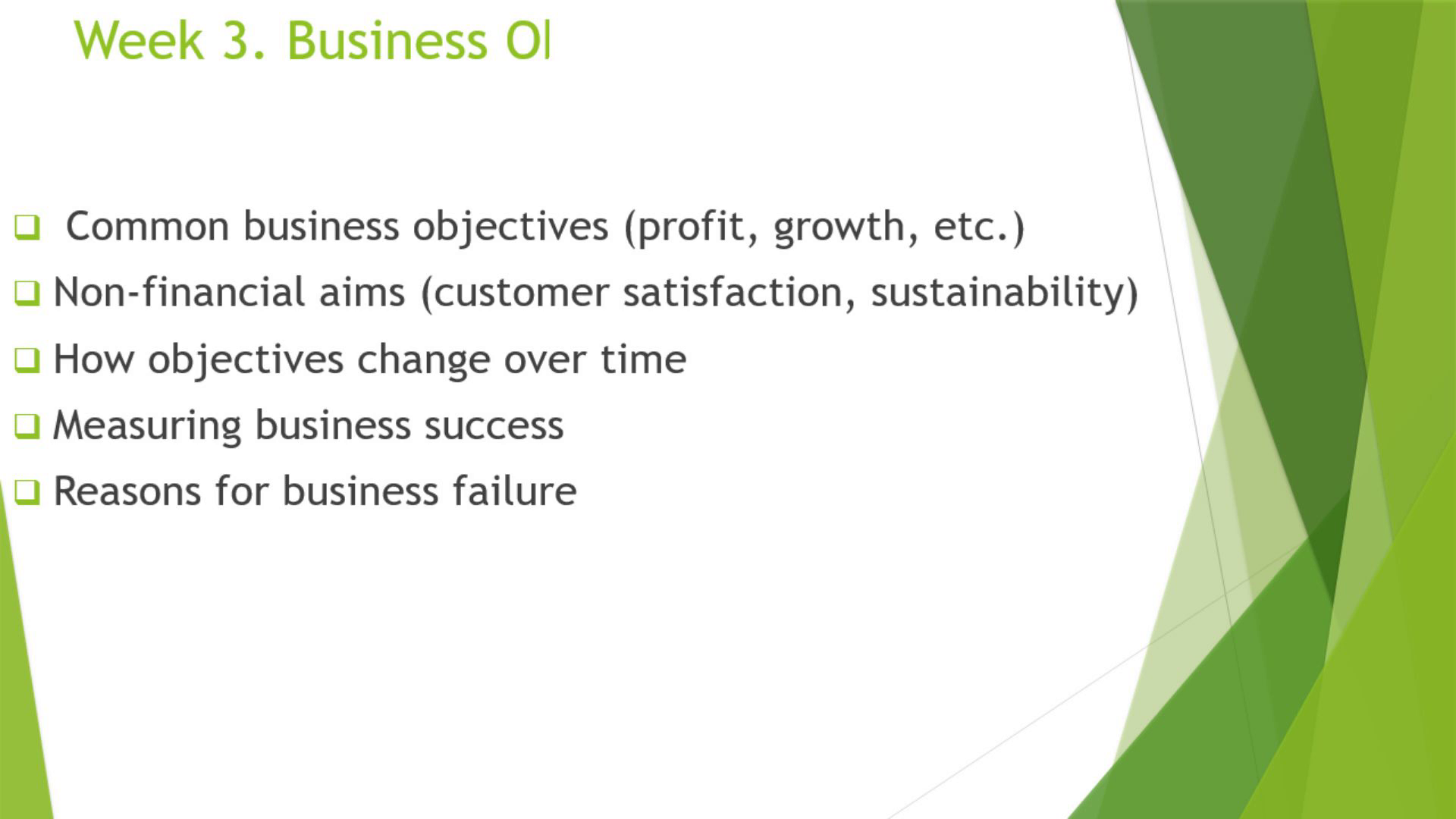
Week 3. Business Objectives and Success
Scene 1 (0s)
Week 3. Business Objectives and Success. Common business objectives (profit, growth, etc.) Non-financial aims (customer satisfaction, sustainability) How objectives change over time Measuring business success Reasons for business failure.
Scene 2 (18s)
Businesses pursue various objectives depending on their stage and environment. Profit maximization is a primary goal for most, aiming to earn the highest possible returns. Growth objectives involve expanding operations, sales, or market share. Survival is critical, especially for new or struggling businesses, focusing on maintaining operations during difficult times. Market leadership aims to dominate the industry or sector. Customer satisfaction ensures products or services meet or exceed expectations, fostering loyalty. Social responsibility involves ethical operations and contributing positively to society.
Scene 3 (1m 2s)
Besides financial goals, businesses may prioritize employee welfare by providing good working conditions and benefits. Sustainability focuses on minimizing environmental impact and ensuring long-term viability. Innovation drives the development of new products and services to stay competitive. Community engagement supports local causes and builds goodwill.
Scene 4 (1m 25s)
Start-ups often focus on survival and establishing a market presence. As businesses mature, they shift towards growth and profit maximization. Established firms may prioritize market leadership and brand reputation. Mature companies increasingly emphasize sustainability and corporate social responsibility to maintain long-term success.
Scene 5 (1m 48s)
Common causes include poor management and planning, insufficient capital or cash flow problems, lack of market research or understanding customer needs, ineffective marketing strategies, and adverse external factors such as economic downturns or increased competition.
Scene 6 (2m 6s)
Economic Factors Economic Cycles: Recessions may shift focus from growth to survival Interest Rates: Affect investment decisions and expansion plans Inflation: Impacts pricing strategies and profit objectives Exchange Rates: Influence international trade objectives Market Saturation: May require diversification objectives.
Scene 7 (2m 27s)
External factors. New Competitors: Can force focus on market share retention Disruptive Technologies: May necessitate innovation objectives Legal and Political Factors Regulation Changes: May require compliance-focused objectives Tax Policies: Influence profit and investment objectives Political Stability: Affects expansion and risk management goals Social and Cultural Trends Changing Consumer Values: May shift focus toward sustainability Demographic Changes: Influence target market objectives Work Culture Expectations: Impact employee-related objectives.